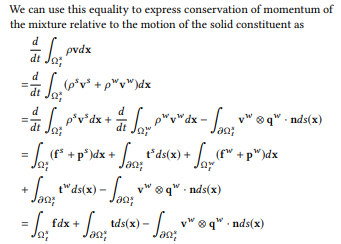Image:
Over the years, I've had the pleasure of covering a lot of mind-blowing science at Motherboard, some of it wonderful, much of it terrifying: the ability to create believable fake porn videos, whatever time crystals are, and the bewildering, synchronous movements of the universe.But I'm not exaggerating when I say that few scientific advancements have made my jaw drop like this video that simulates baking with 3D graphics.Please note that the video doesn't just show 3D-rendered baked goods that look and behave believably when you tear them, which is also cool but something that we've already seen earlier this year. No, that wasn't enough. In their paper, "A Thermomechanical Material Point Method for Baking and Cooking," researchers from UCLA present a method for "visual simulation of baking breads, cookies, pancakes and similar materials that consist of dough or batter (mixtures of water, flour, eggs, fat, sugar and leavening agents)."Basically, their method doesn't just simulate a loaf of bread in its delicious final form, but a combination of unbaked solids, water, and gas going through the entire baking process. These materials react to heat in order to recreate the dynamics of IRL baking, like melting, rising, cracking, and solidification. The simulation is so accurate that researchers can make a slit in unbaked dough, which when baked will form that nice crust pattern you see on fancy bread.W O W!The example of the digital cookies about 40 seconds into the video illustrates the depth of the simulation. The researchers "baked" the raw cookie dough (again, these cookies aren't real, they're computer cookies) with varying amounts leavening agent and oven temperatures. This caused some cookies to burn, and some cookies to spread too much, which is usually what happens when I try to make cookies. Maybe I should stop using the chocolate chip cookie recipe I currently have and use the researchers' recipe for simulated cookies, which looks more like this: By rendering the components that make baked goods rather than a finished product, the researchers are able to simulate other foods as well. A later example in the video shows how they essentially simulate raisins by first simulating a grape, then evaporating the water content.At this point you're probably wondering why in the world anyone is even researching this."Whether it is bread rising in the oven, cookies oozing with melting chocolate chips, or a pancake sizzling in a pan, baking and cooking are integral parts of our everyday lives," the researchers write. "It is therefore important and yet challenging to model these phenomena accurately when creating compelling virtual scenes for computer graphics applications."That is the closest explanation I could find for why the researchers are doing this. It's not entirely convincing, but I am so happy that someone keeps pushing the science of simulated computer food into the future.
By rendering the components that make baked goods rather than a finished product, the researchers are able to simulate other foods as well. A later example in the video shows how they essentially simulate raisins by first simulating a grape, then evaporating the water content.At this point you're probably wondering why in the world anyone is even researching this."Whether it is bread rising in the oven, cookies oozing with melting chocolate chips, or a pancake sizzling in a pan, baking and cooking are integral parts of our everyday lives," the researchers write. "It is therefore important and yet challenging to model these phenomena accurately when creating compelling virtual scenes for computer graphics applications."That is the closest explanation I could find for why the researchers are doing this. It's not entirely convincing, but I am so happy that someone keeps pushing the science of simulated computer food into the future.
Advertisement
Advertisement

